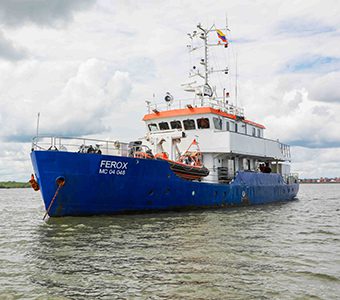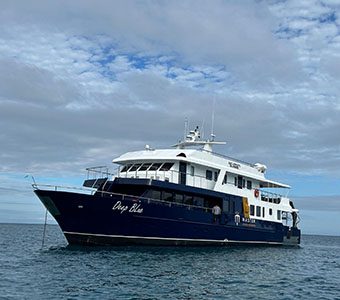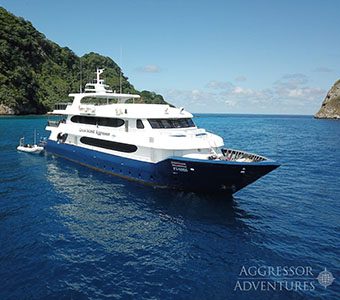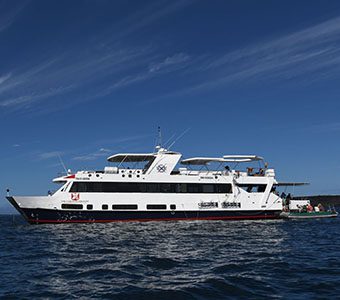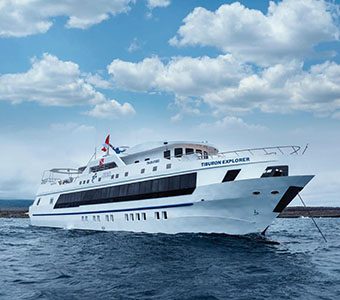The Hammerhead Triangle is a region in the eastern Pacific Ocean, an area triangulated by the Galapagos Islands, Cocos Island, and Malpelo Island, and it’s known for abundant hammerhead shark populations. Here’s what you need to know:
The Galapagos Islands
This remote archipelago is famously known for its unique and abundant wildlife, including various shark species, with the islands of Wolf and Darwin especially known for large schools of hammerheads.
Cocos Island
Cocos (also known as ‘Shark Island’) is a remote volcanic island in Costa Rica, another hotspot for sharks – especially hammerheads, as well as an abundance of other pelagic schooling species.
Malpelo Island
Lesser known than the other two points of this triangle, Malpelo Island, off the coast of Colombia, is known for its incredible shark encounters, particularly hammerheads and silky sharks.
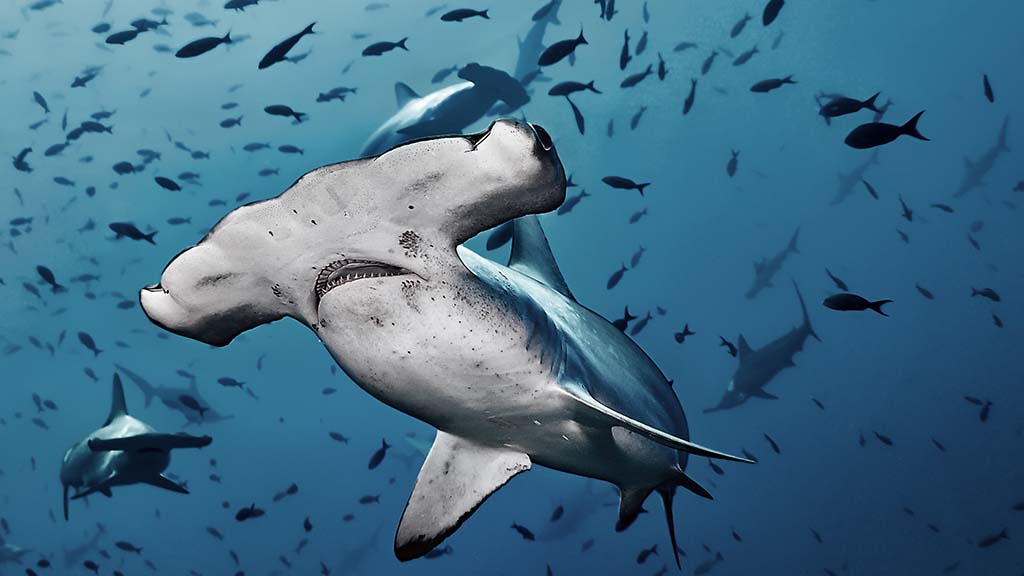
So, what is the Hammerhead Triangle?
These three remote archipelagos each lie at least 500 km from the mainland, in close proximity to deep open ocean, creating the perfect conditions for powerful currents which act as an underwater superhighway for marine megafauna.
They also share a similar underwater environment, with cool water temperatures between 16-25°C and craggy reef systems. The islands are also all volcanic in origin, and the stone and lava outcroppings are an ideal habitat for small grazing and cleaner fish, who wait patiently for sharks and other large wildlife to arrive for a spa treatment.
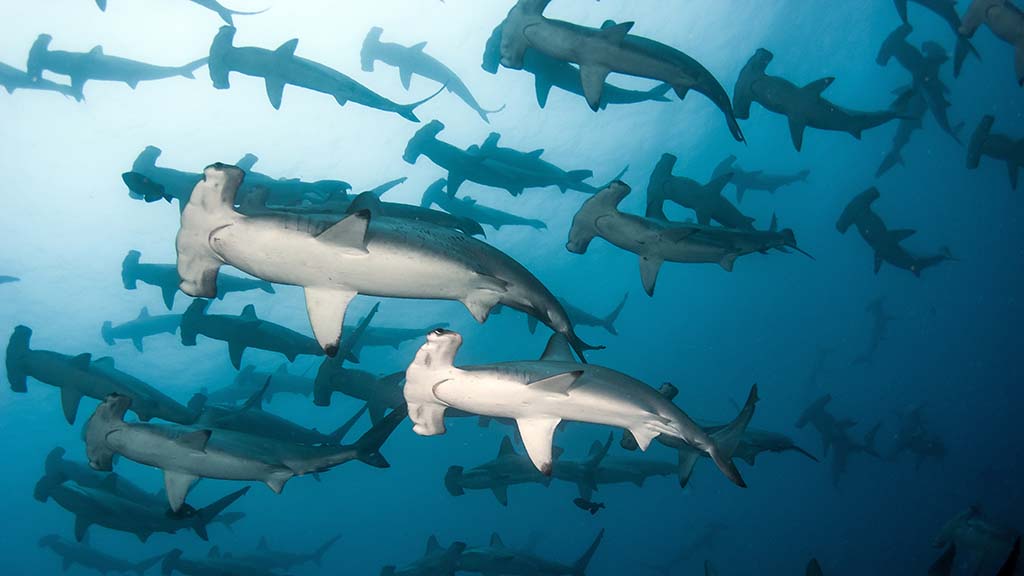
Why do hammerhead sharks gather here?
The main scientific theory is that the sharks are drawn to the region’s cold upwellings. Within the Hammerhead Triangle, two vast oceanic ecosystems combine – the Costa Rica Thermal Dome north of the equator, and the Humboldt-Galapagos system to the south. Both systems draw cold water from the ocean depths toward the surface, allowing marine life to flourish in the shallows where the nutrients meet the sunlight.
Without these nutrient-rich currents, the eastern Pacific would be nothing more than a vast blue desert, unable to support such a wide variety of species. The cold upwellings create blooms of plankton, which in turn support larger animals, and eventually lure sharks, pelagic fish, and marine mammals to feed – a complete food chain.
Scalloped hammerhead sharks are solitary night hunters and spend much of their lives at depth. During the light of day, they gather in huge schools to rest, socialise, and visit shallow cleaning stations to have their skin picked clean of parasites. This behaviour, when combined with the region’s upwellings make it possible for divers to observe these fascinating oceanic predators in massive schools at shallow depths not typical elsewhere.

How to dive the Hammerhead Triangle
While some diving areas in the Galapagos can be visited via day boat, the most impressive sites are too far-flung for that approach. And visitors to Cocos and Malpelo are not allowed to stay on land, making liveaboards the only way to dive here. It’s also important to note that diving in the Hammerhead Triangle isn’t for beginners. This region is prone to harsh open-ocean surface conditions like wind and waves, as well as powerful currents.
Galapagos
- When: January through May
- Dive Sites: Darwin and Wolf islands
- We recommend: Galapagos Master, Galapagos Aggressor III, Galaxy Diver II, Humboldt and Tiburon Explorer, Galapagos Sky
The Galapagos Islands are home to dozens of incredible dive sites, but the islands of Wolf and Darwin are easily the two most famous. At these isolated rocky reefs, lucky dive groups can spot schooling hammerheads by the hundreds, often joined by eagle rays, seals, Galapagos sharks, silkies, and other powerful pelagic species.
Cocos Island
- When: July through September
- Dive Sites: Bajo Alcyone, Dirty Rock and Punta Maria
- We recommend: Okeanos Aggressor, Cocos Aggressor, Sea Hunter, Nautilus Explorer (August only)
Large schools of scalloped hammerhead sharks can be seen here, as well as white and blacktip reef sharks, Galapagos sharks, silkies, tiger sharks, and silvertips. The island is also home to vast shoals of bigeye trevally, snappers, and jacks – a paradise for pelagic lovers.
Malpelo
- When: Visit between July and August or January and March
- Dive Sites: Freezer, Castaway and Monster Face
- We recommend: Ferox and Vivax, both operated by Colombia Dive Adventures
In total, Malpelo is home to around 20 sites packed with tuna, sailfish, and a wide variety of sharks. Schooling scalloped hammerheads are spotted in the hundreds, as well as large schools of silkie sharks, sand tiger sharks, and nearly a dozen other shark species.

